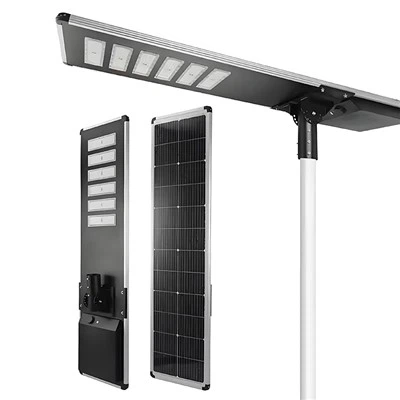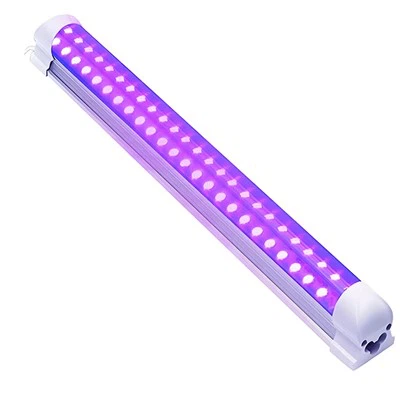Prior to the advent of LEDs, fluorescent tubes were among the most widely used forms of workplace lighting. Fluorescent bulbs are no longer the industry standard, though, since a brighter and more energy-efficient lighting alternative has emerged. The age of LED tubes has here!
LED tube lights are ideal for a number of settings, including workplaces and warehouses. They are ideal for spaces that employ temperature control since they hardly emit any heat and may be used as indirect or parabolic lighting fixtures. Compared to fluorescent tubes, these lights are more energy efficient and have a higher color rendering index (CRI). Aside from that, LED tube lights burn out far less frequently and require very little overall maintenance.
What is a LED T8 Tube?
The various key designations are used to categorize LED tubes. The most popular ones are bulb/lamp size and tubing length. Typically, the lamp size is represented by a "T" measurement; T5, T8, and T12 are examples of standard sizes. This indicates that the thicker the LED tube's diameter, the higher the number next to the "T."
The number that follows indicates how many 1/8-inch wide the tube is, and the letter "T" stands for 1/8-inch. Accordingly, an LED T8 tube is a fitting that has a precise diameter of 8/8 inches, or 1 inch.
Factors to consider when getting a LED T8 Tube
Purchasing your first T8 tube might be intimidating, much like purchasing other lighting fixtures. Here is a tried-and-true strategy to get you started if you're feeling overwhelmed by the amount of information available!
Select the type that suits your needs
You should be aware of the following three varieties of T8 tubes: Universal, Ballast Compatible, and Direct Wire.
As the name suggests, direct wire tubes are linked directly and do not require a ballast in order to operate.
Ballast Compatible: Although these tubes need a ballast, they may be plugged into an existing socket, eliminating the need for extra cabling.
Universal: These tubes may be used in both direct wire and ballast applications since they are compatible with both. Until the ballast fails, they are usually put as ballast compatible. After then, it is direct-wired till the end of its useful life.
Do some study and determine what your space requires before deciding on a certain kind of T8 tube. Selecting a T8 tube to install will be made easier if you are aware of the application that will be used early on.
Consider whether to get frosted or clear
You should choose between a clear or frosted T8 tube, even though not many people do. For a number of reasons, frosted tubes are unquestionably more popular. You can't see the LED chips within the tube since it's frosted. Additionally, like their less energy-efficient non-LED cousins, these tubes may generate a consistent light output. However, you should choose a clear tube if illumination is a major concern for you. You receive maximum lumen output since the light doesn't have to go through a diffuser, however the difference is little.
When deciding between frosted and transparent, consider how your lights will be used. In order to prevent direct exposure to the intensely bright LEDs, it could be preferable to use a transparent tube in a warehouse and a frosted tube in an office. It also relies on your own preferences. In any case, both are quite effective and offer great brightness at a reasonable cost.
Benefits of LED tubes
LEDs are a better choice if you're unsure whether to get fluorescent lights or T8 LED tubes. Why? as LEDs are far better than fluorescents. Here are some advantages of utilizing them in case you're still not convinced.
1.LED tubes are environmentally friendly. Both in terms of energy consumption and production (materials and method). It also pertains to disposal because LEDs don't contain mercury.
2.Directionality is a feature of LED tubes. If they are installed on the wall or ceiling, half of the light is wasted since they do not bounce light in a 360-degree circle.
3.It is possible to dim LED tubes. You can simply adjust the brightness level of your tube lights if you have the suitable configuration.
4.There are many color temperatures available for LED tubes. Warm white light, natural white light, and cold white light are all options available to you.
5.LED tubes are far less likely to break. LED tubes are composed of durable polymers as opposed to the thin glass used in fluorescent lamps.
6.Energy-efficient LED tubes use a lot less electricity than fluorescent tubes for the same lumen output. A 1000–1400W fitting may be powered with just 18–22W!
It's time to bid your fluorescent lights farewell now that you understand what an LED T8 tube is, how to choose one, and its advantages! For information on where to get them, see our website, Simple Lighting! In addition to tube lights, we also have a large selection of commercial, outdoor, and indoor lighting!
Shenzhen Benwei Lighting Technology Co., Ltd
Telephone: +86 755 27186329
Mobile&whatsapp: +86 18659785153
Email: bwzm04@benweilighting.com
Skype:bwzm13







